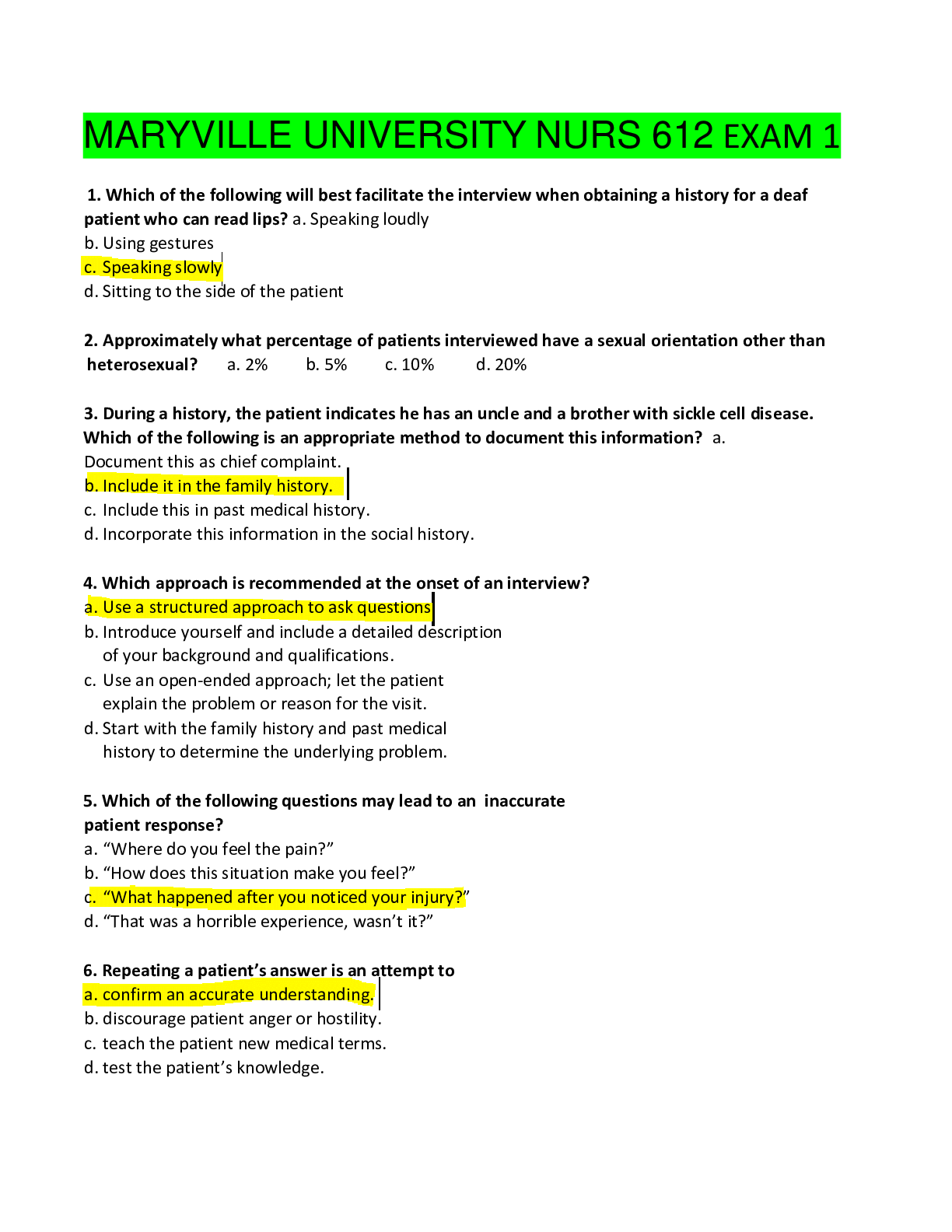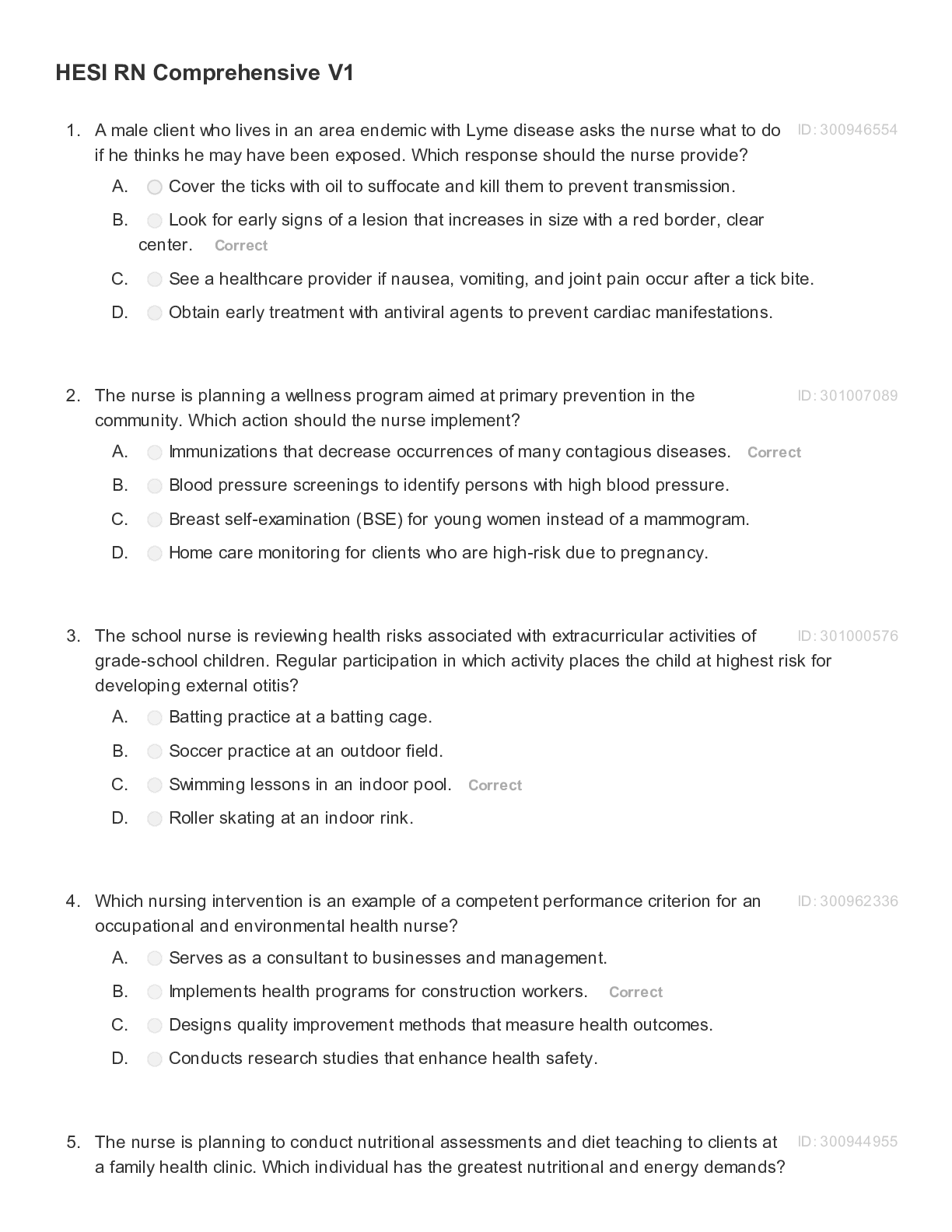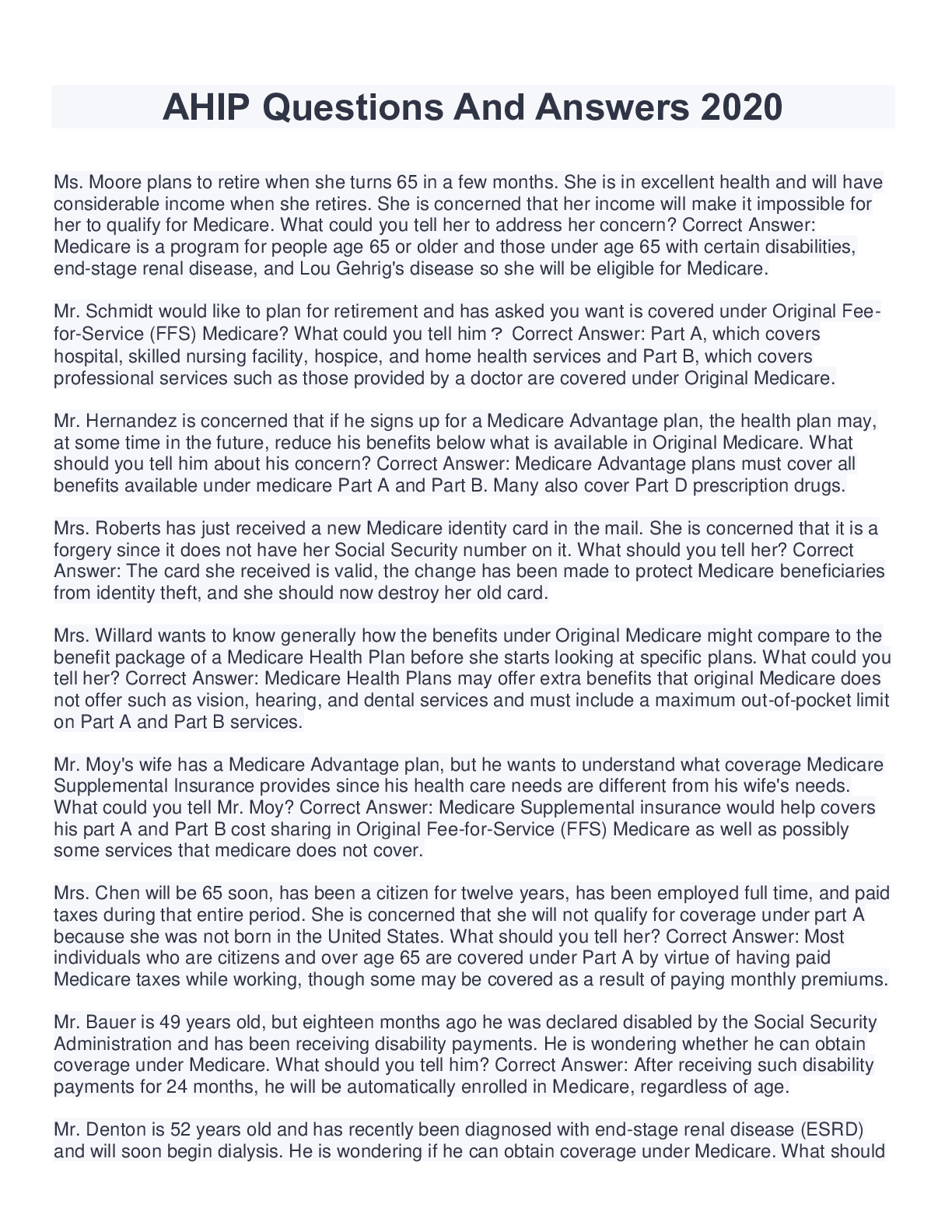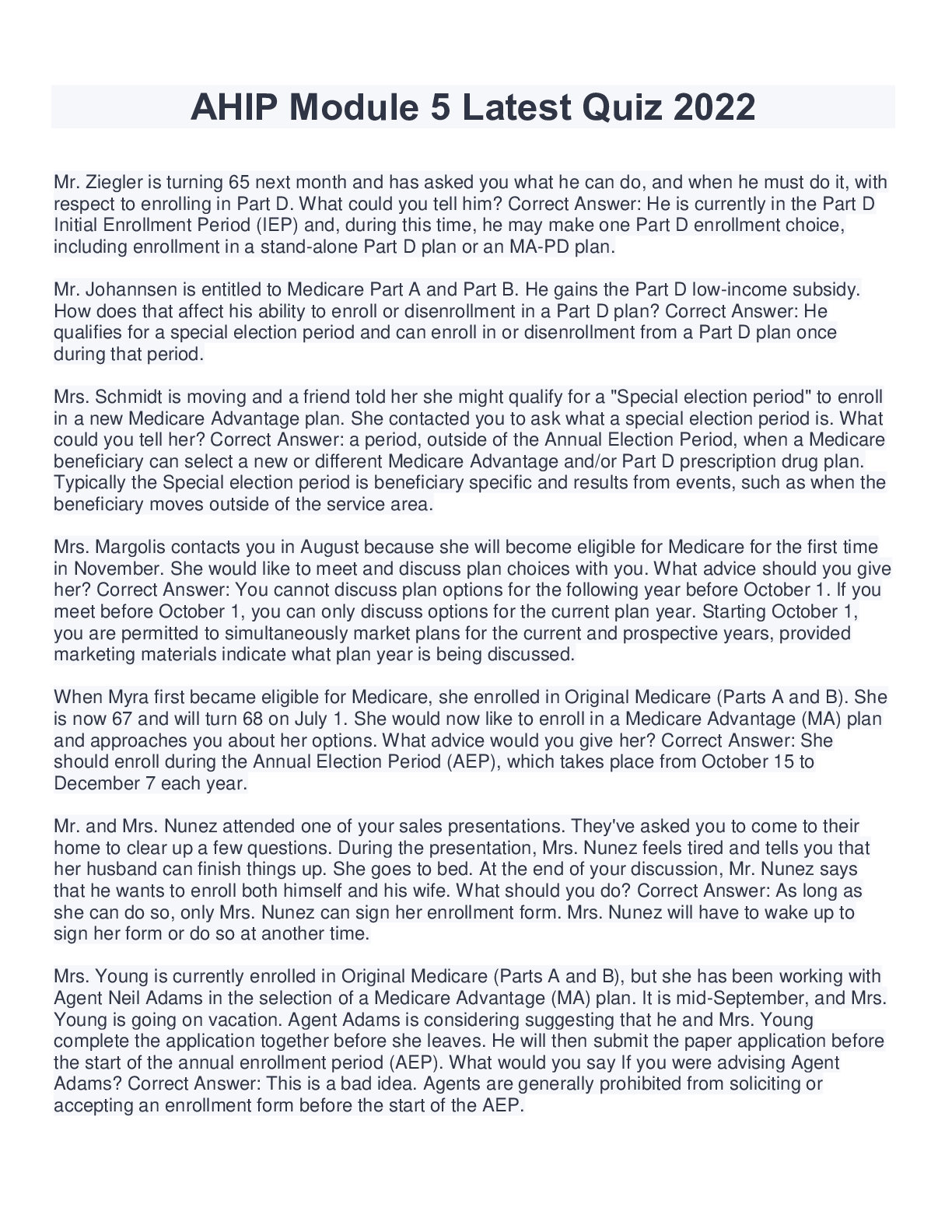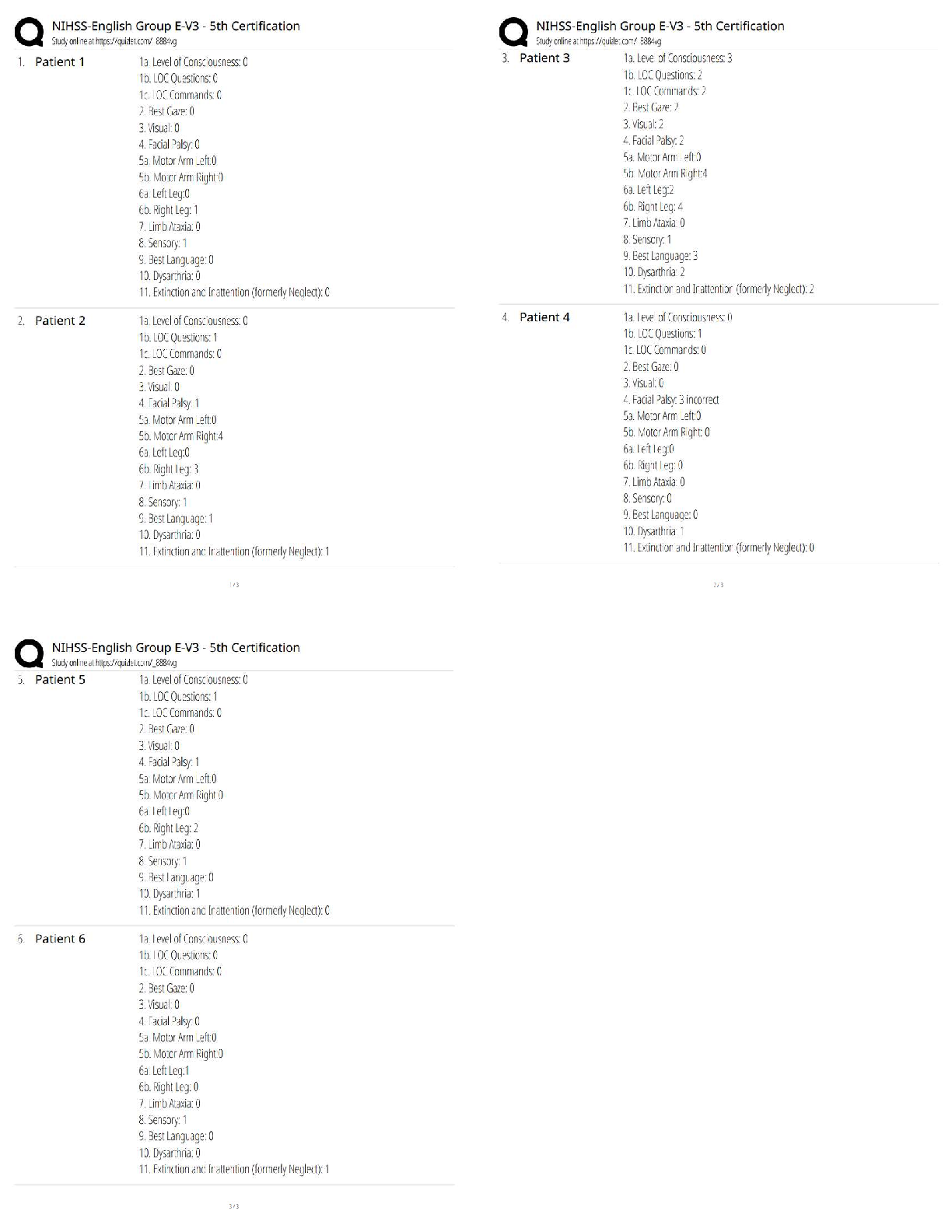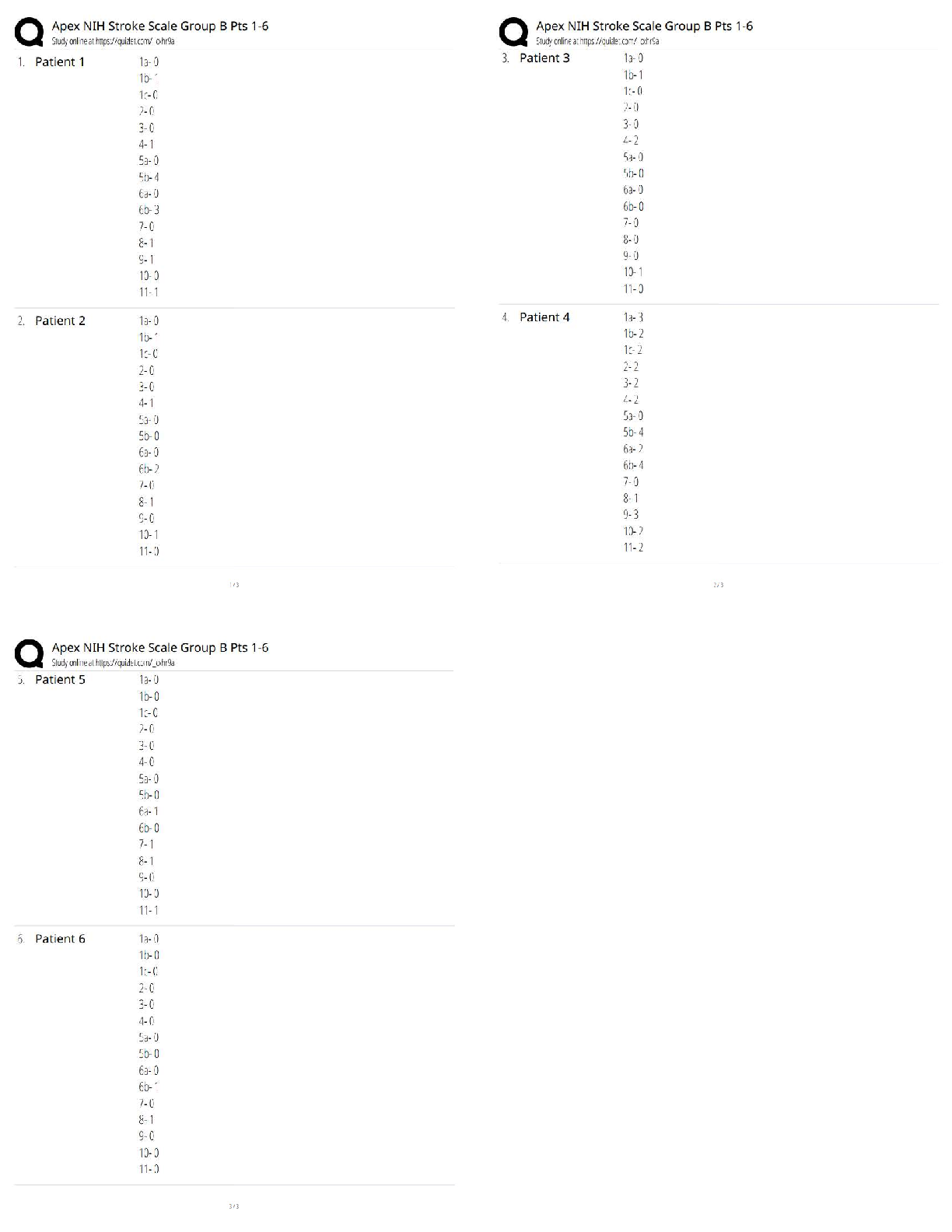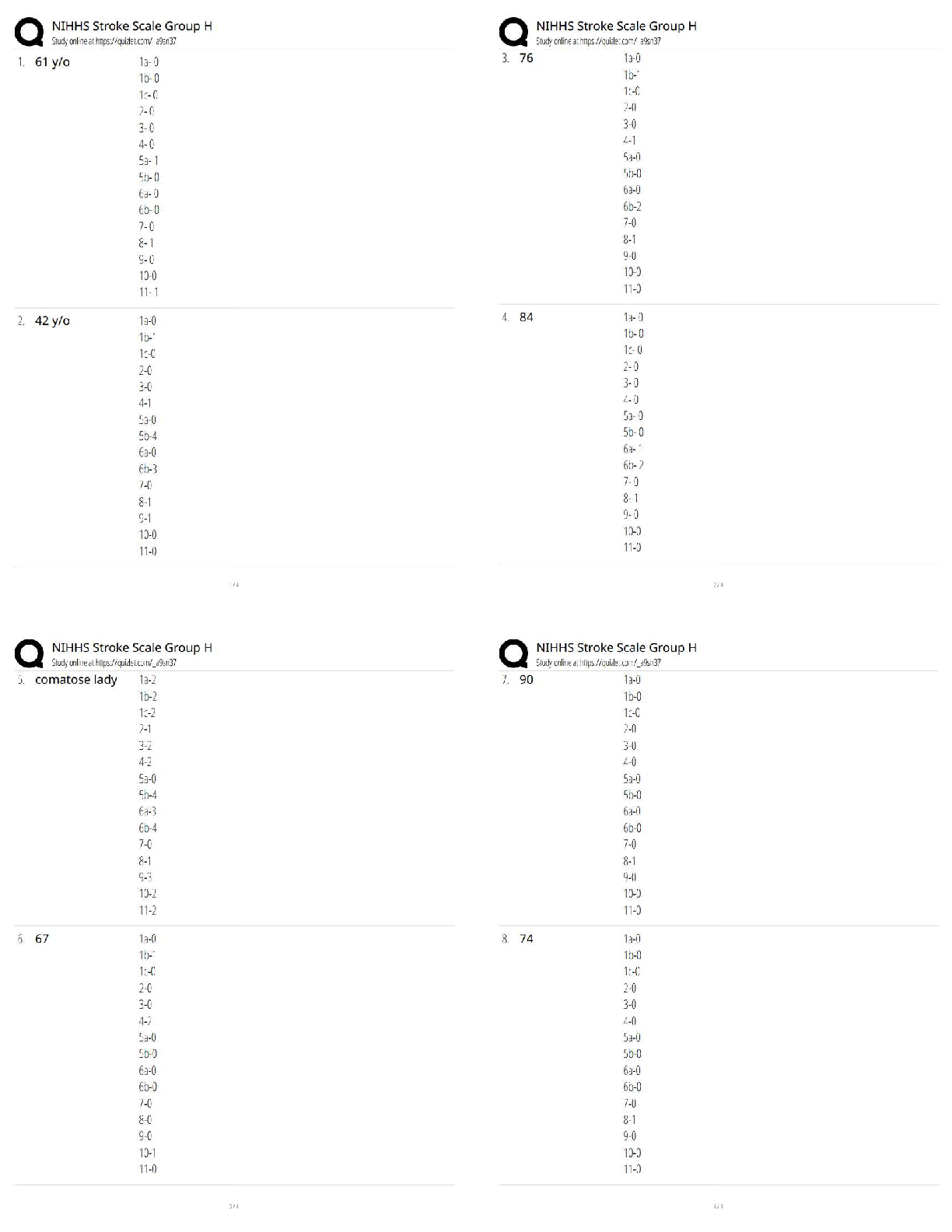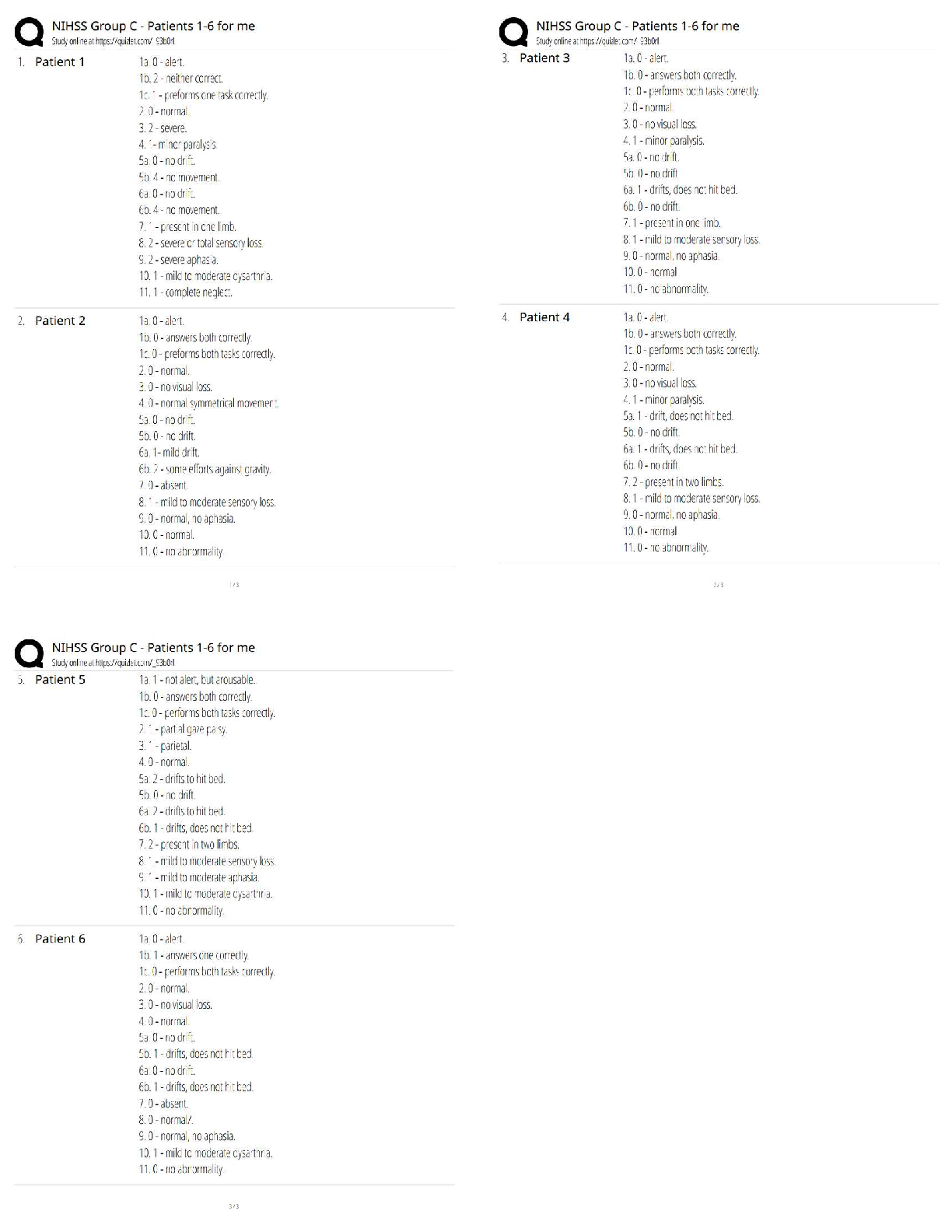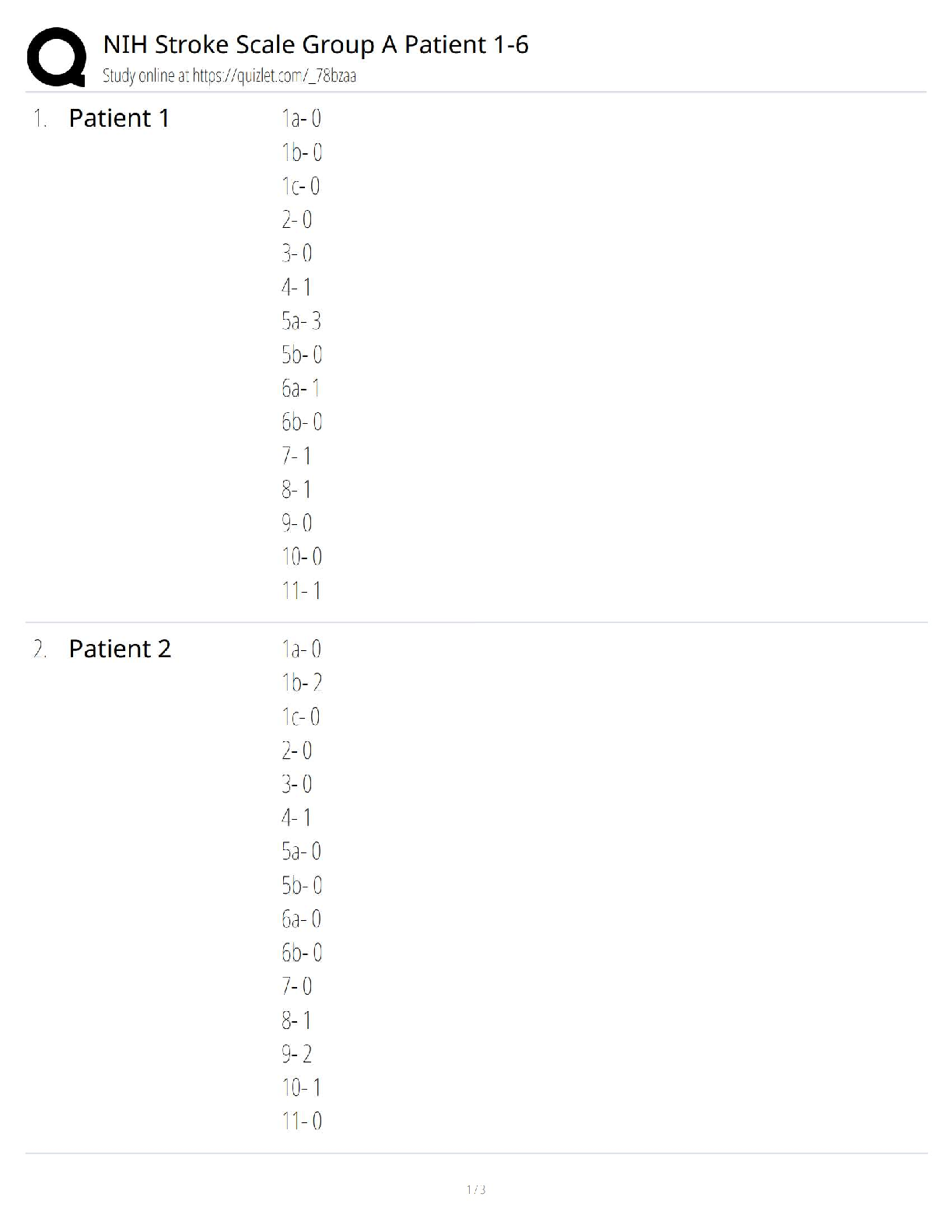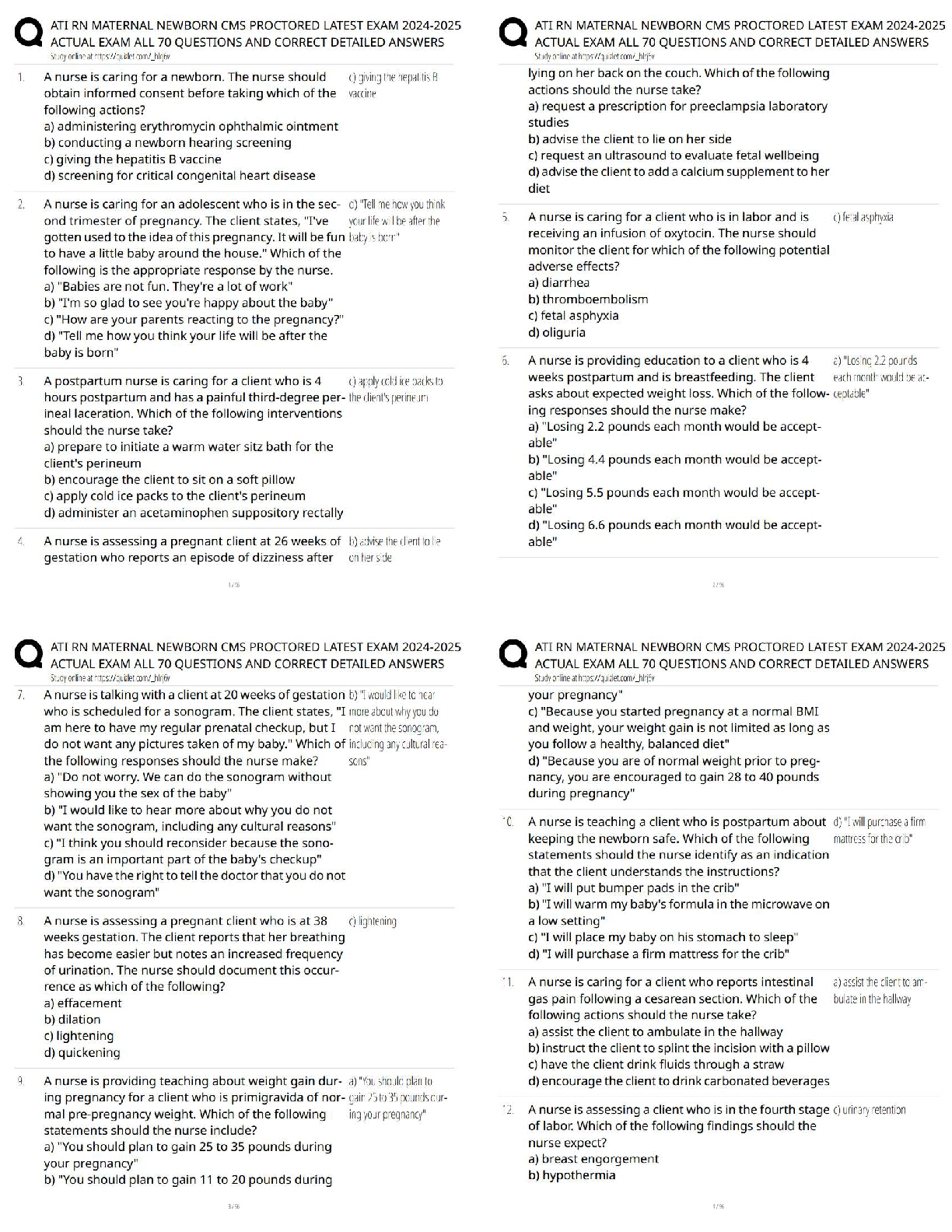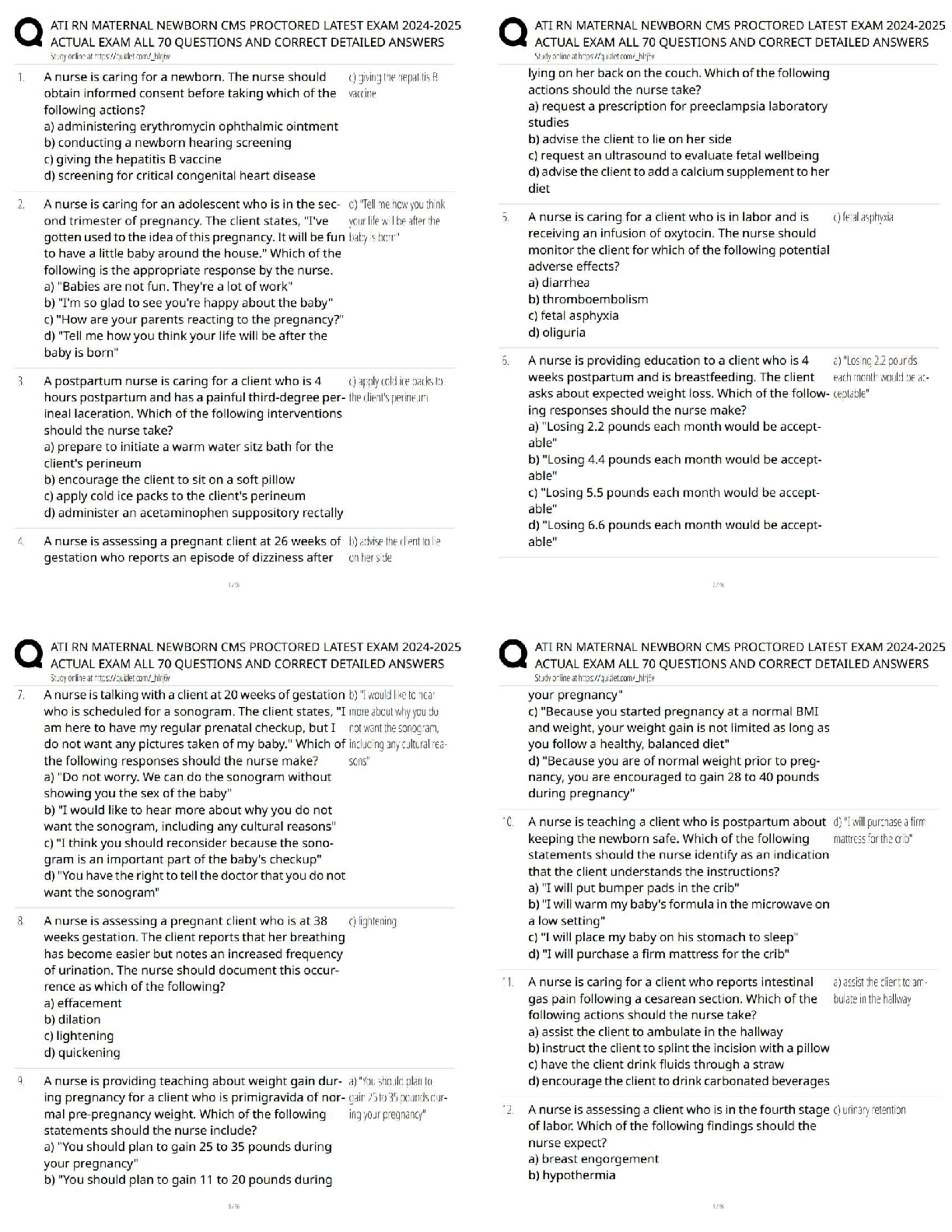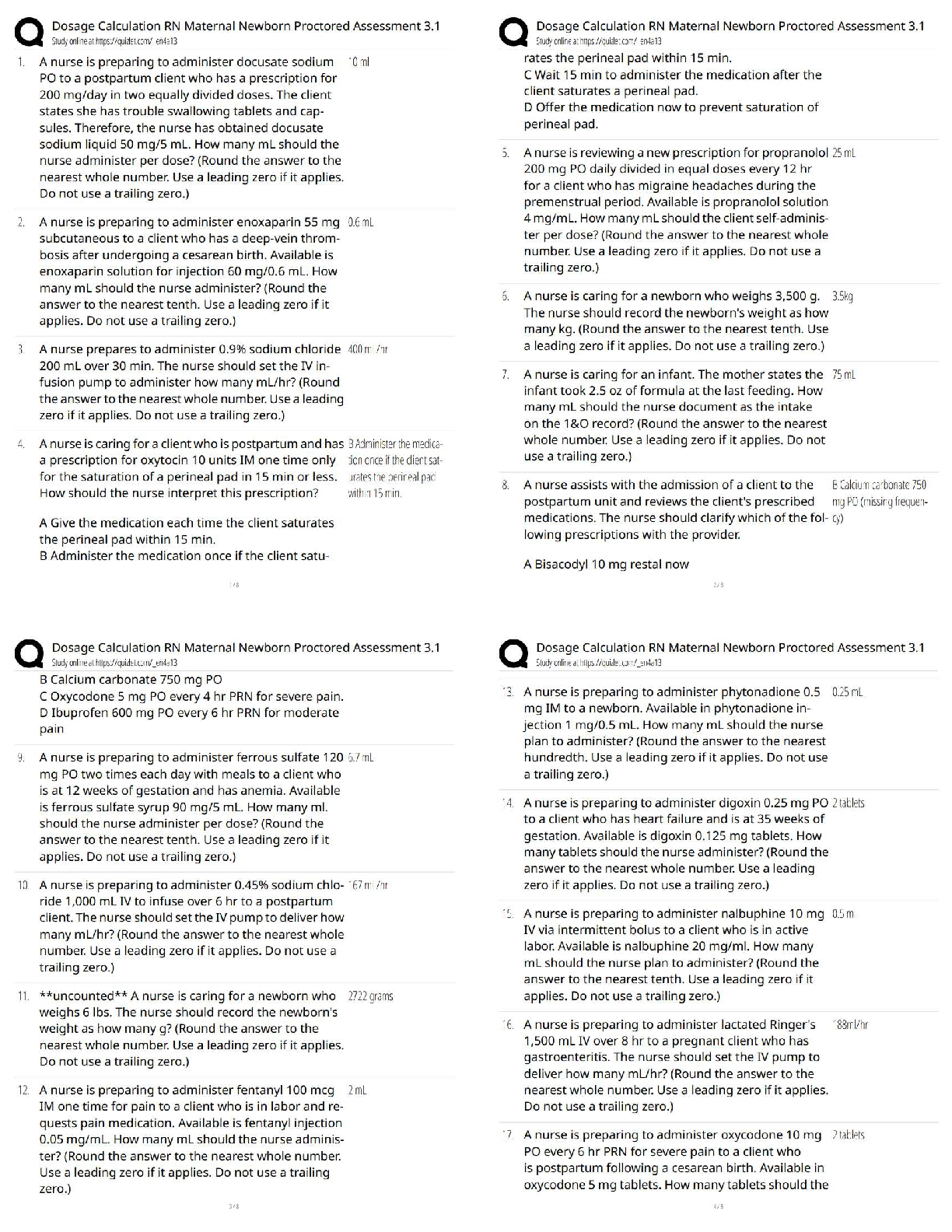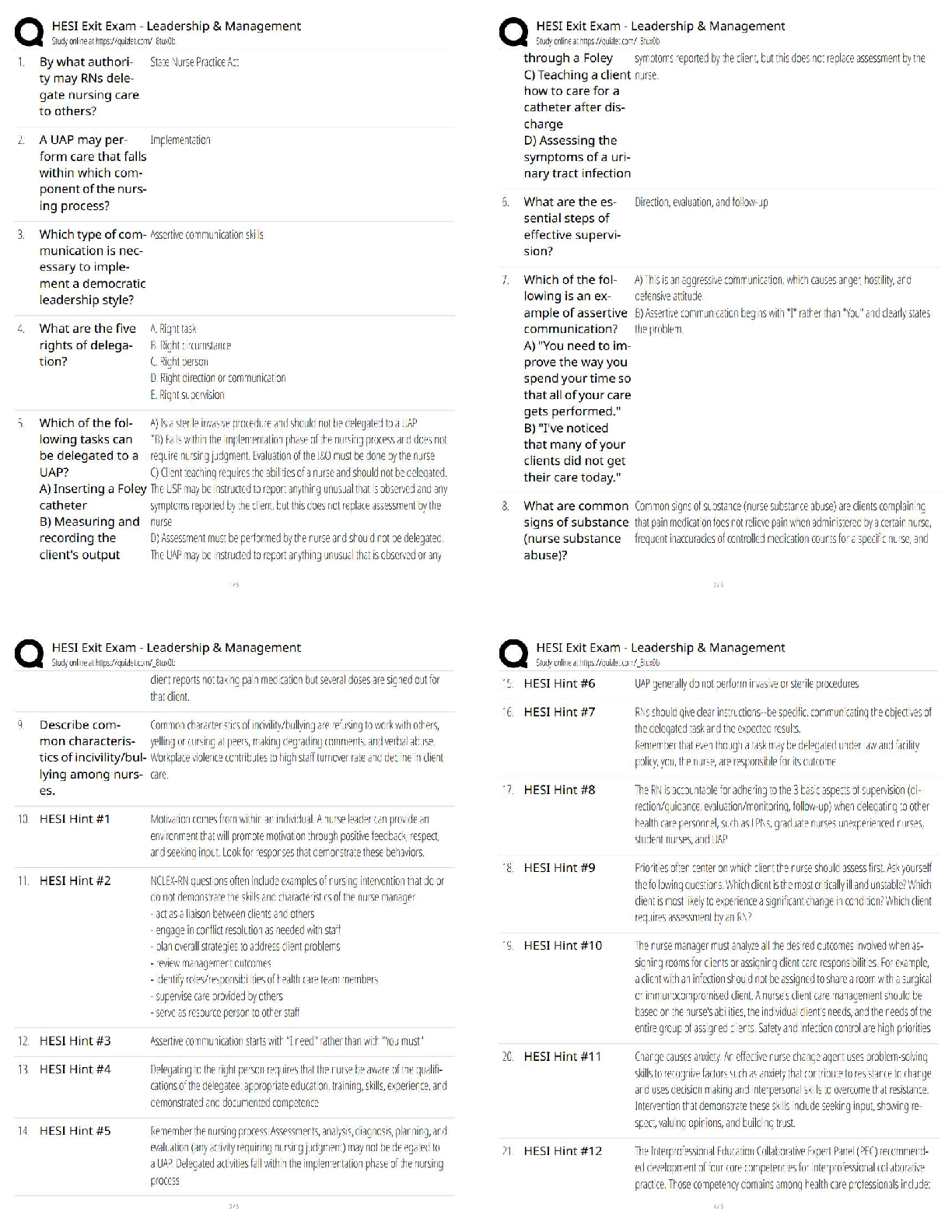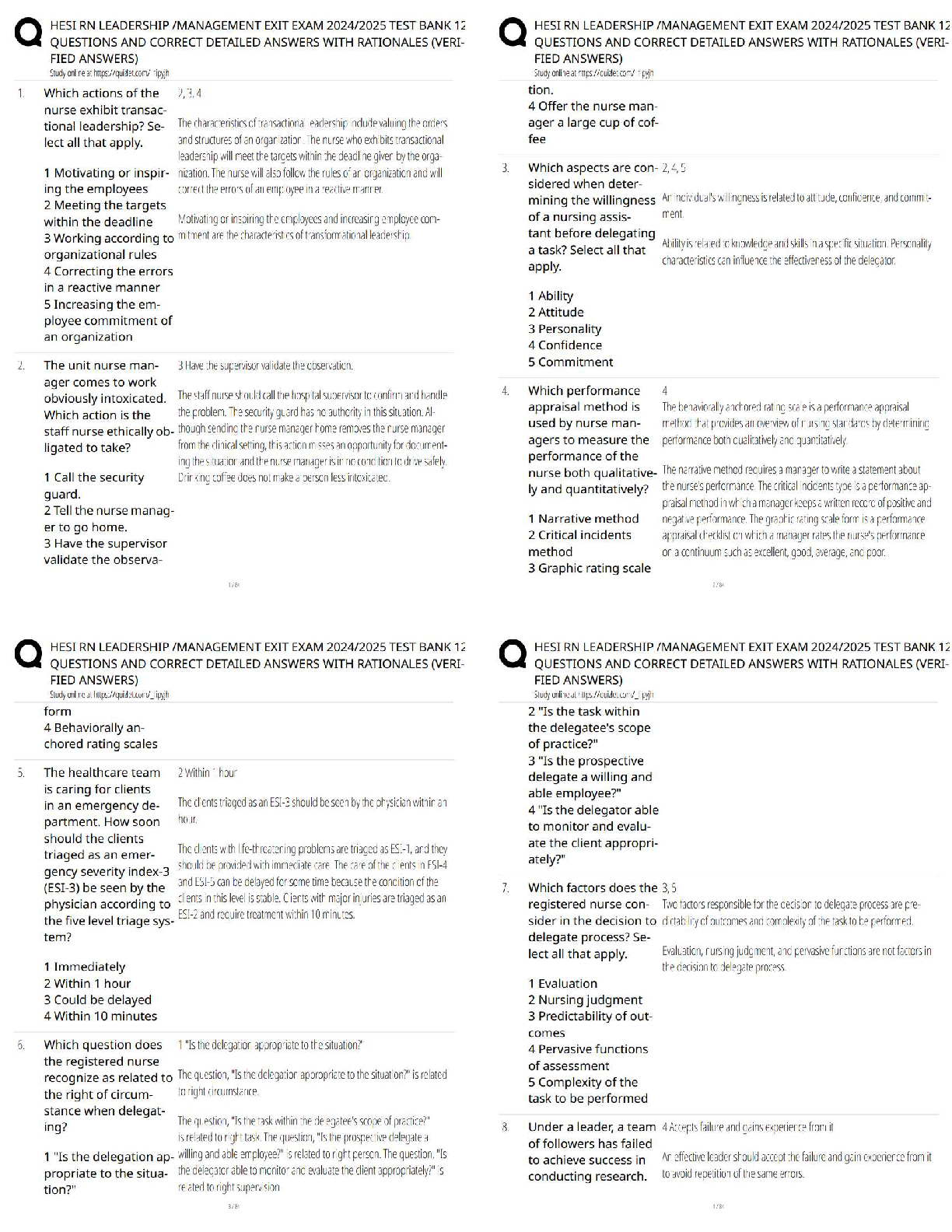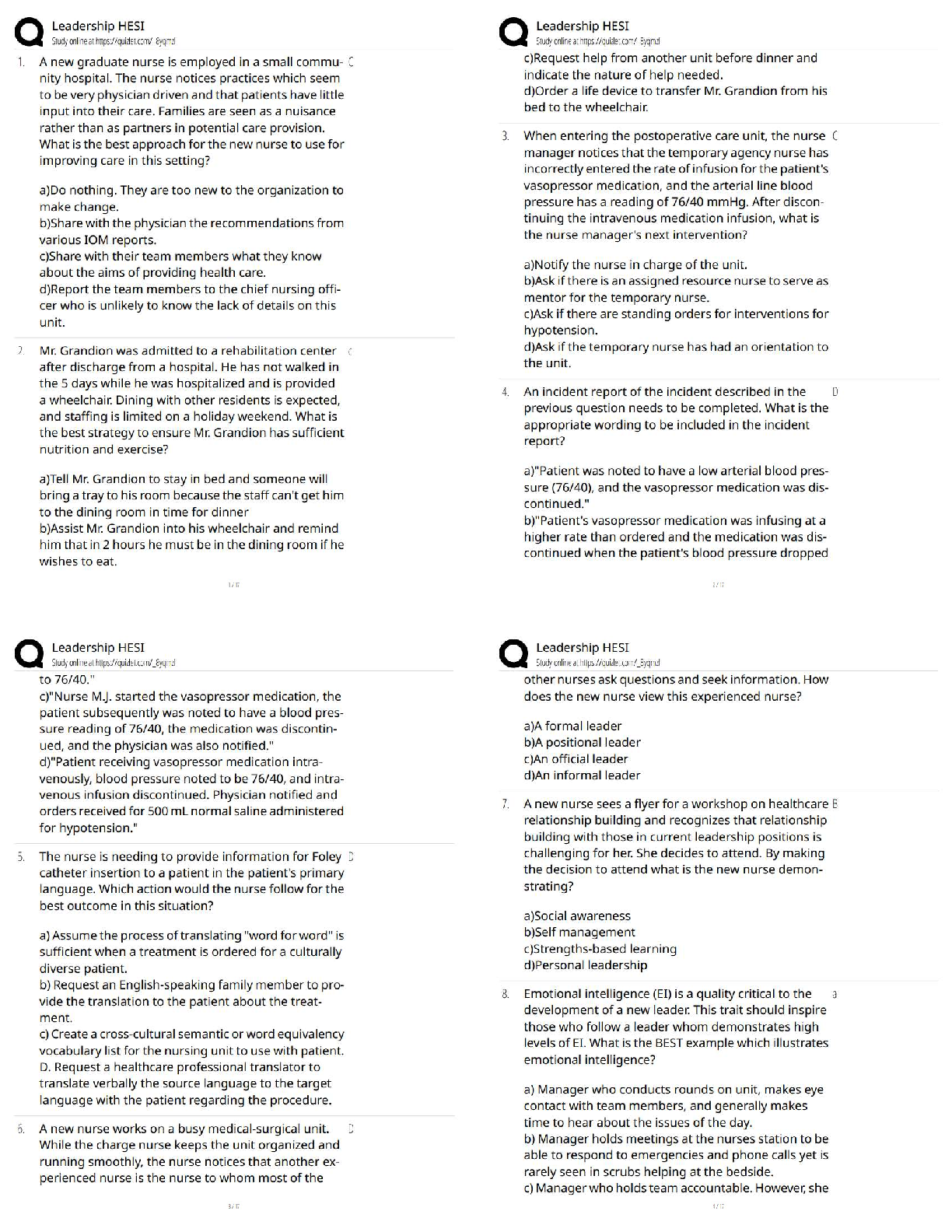Economics > QUESTIONS & ANSWERS > ECON2301 Chapter 6 Quiz with complete answers 2021 (All)
ECON2301 Chapter 6 Quiz with complete answers 2021
Document Content and Description Below
ECON2301 Chapter 6 Quiz with complete answers 2021 Which of the following statements is false? a. If the income elasticity of demand for a good is less than 1, the demand for the good is income ... inelastic. b. If the income elasticity of demand for a good is greater than 1, the demand for the good is income elastic. c. If the income elasticity of demand for a good is equal to 1, the demand for the good is income unit elastic. d. If the income elasticity of demand for a good is less than zero, the good is a normal good. If the cross elasticity of demand for good A with respect to good B is +2.7, then good A is a. an inferior good. b. a normal good. c. a substitute for good B. d. a complement to good B If the cross elasticity of demand coefficient between goods X and Y is negative, then goods X and Y must be a. complements. b. substitutes. c. normal goods. d. inferior goods For a certain good, when price rises from $90 to $98, quantity demanded falls from 7,400 to 6,500. The price elasticity of demand here is approximately , making the demand for this good in the price range between $90 and $98. a. 1.52; inelastic b. 1.52; elastic c. 1.86; elastic d. 0.66; elastic Refer to Exhibit 19-3. If price increases from $2.50 to $3.50, total revenue along the demand curve a. increases to $67.50. b. increases to $87.50. c. remains at $87.50. d. decreases to $67.50. A per-unit tax is placed on the production of good Y. Someone who believes that the producers of the good will end up paying the full tax may be assuming that the good's demand curve is a. elastic. b. perfectly inelastic. c. inelastic. d. perfectly elastic. All other things being equal, the substitutes for a good, the the price elasticity of demand. a. fewer; higher b. more; higher c. more; lower d. a and c Suppose that when the price of a good falls from $12 to $9, the quantity demanded of that good rises from 310 units to 350 units. What is the approximate price elasticity of demand between these two prices? a. 0.42 b. 2.36 c. 0.68 d. 3.80 Suppose a producer decides that if the price of his or her product is $10, the quantity supplied will be 1,000 units, and if the price is $11, the quantity supplied will be 1,100. The supply of the good is a. elastic. b. inelastic. c. perfectly elastic. d. unit elastic Refer to Exhibit 19-3. When price decreases from $4.50 to $3.50, the price elasticity of demand is a. 0.4375. b. 0.50. c. 1.0. d. 2.00. If income elasticity of demand for a good is negative, the good is a(n) good. a. normal b. positive c. complementary d. substitute e. inferior If supply is perfectly inelastic, it follows that a a. rise in price will not change quantity supplied. b. fall in price will not change quantity supplied. c. rise in price will change quantity supplied by more than a fall in price. d. fall in price will change quantity supplied by more than a rise in price. e. a and b An inferior good is a. any good that consumers think is of low quality. b. a good for which the quantity demanded increases as its price decreases. c. a good for which the demand rises as income falls. d. a good for which the demand rises as income rises. If Cassandra bought 12 blouses last year when her income was $46,000 and she buys 14 blouses this year when her income is $52,000, then her income elasticity of demand for blouses is approximately a. -1.26. b. +1.26. c. -0.80. d. +0.80. Which of the following statements is true? a. When a firm lowers the price of its product, total revenue always falls. b. When a firm raises the price of its product, total revenue always rises. c. When a firm raises the price of its product, total revenue always falls. d. When a firm lowers the price of its product, total revenue always rises. e. none of the above If, as the price of good Y rises from $5.00 to $5.75, the quantity demanded of good Y falls from 54 units to 48 units, price elasticity of demand for good Y in this price range is a. 1.05. b. 1.19. c. 0.37. d. 4.77. e. 0.84. The shorter the period of time consumers have to adjust to price changes, the the elasticity of demand. a. lower; income b. lower; price c. higher; income d. higher; price Refer to Exhibit 19-9. What is the price elasticity of demand between $4 and $6? a. 0.825 b. 0.833 c. 1.25 d. 1.20 Refer to Exhibit 19-2. The market for good X is initially in equilibrium at $5. The government then places a per-unit tax on good X, as shown by the shift of S1 to S2. As a result, a. consumers end up paying $6.25 per unit, and producers end up receiving $5.00 per unit, but keeping only $4.00 per unit. b. consumers end up paying $6.25 per unit, and producers end up receiving and keeping $4.00 per unit. c. consumers end up paying $5.00 per unit, and producers end up receiving and keeping $5.00 per unit. d. consumers end up paying $6.25 per unit, and producers end up receiving $6.25 per unit, but keeping only $4.00 per unit Refer to Exhibit 19-5. Assume that the seller of X increases the price from $1.50 to $2.00, and this results in an increase in total revenue. Which of the graphs represents the demand curve for X? a. (1) b. (2) c. (3) d. all of the above [Show More]
Last updated: 3 years ago
Preview 1 out of 7 pages
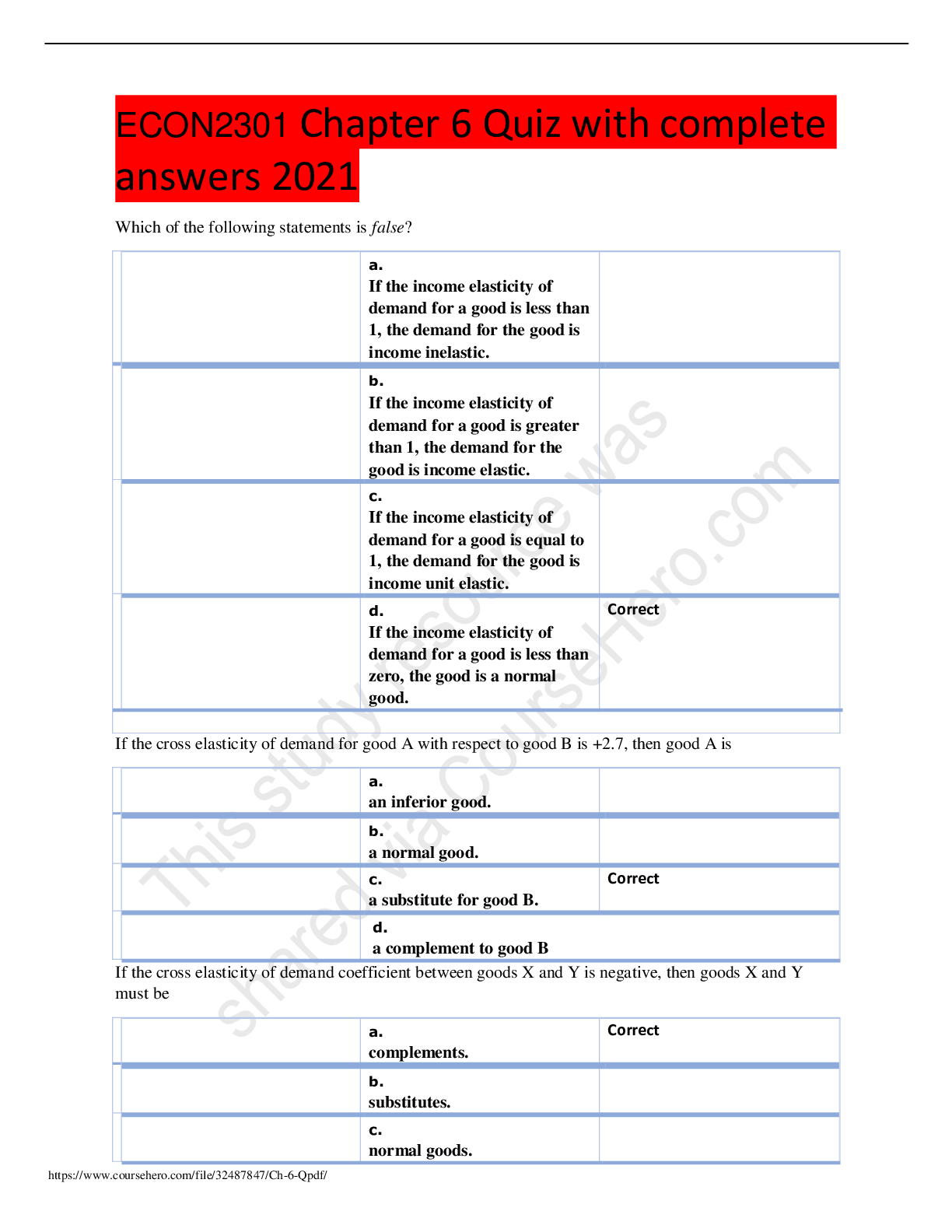
Buy this document to get the full access instantly
Instant Download Access after purchase
Buy NowInstant download
We Accept:

Reviews( 0 )
$6.00
Can't find what you want? Try our AI powered Search
Document information
Connected school, study & course
About the document
Uploaded On
Dec 30, 2020
Number of pages
7
Written in
All
Additional information
This document has been written for:
Uploaded
Dec 30, 2020
Downloads
0
Views
119





